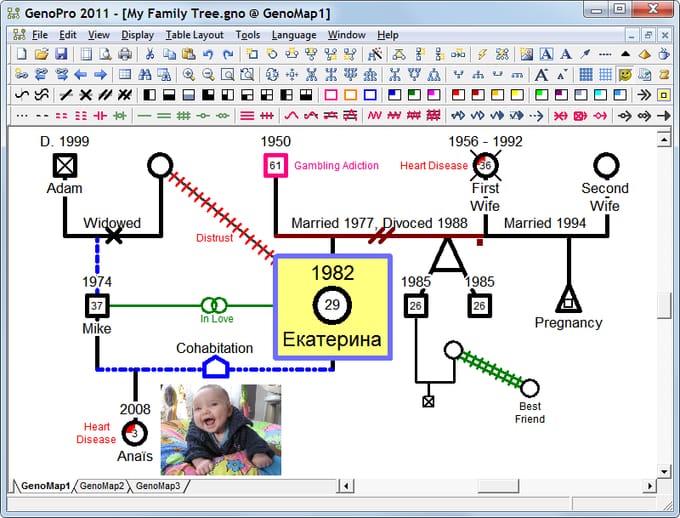What are the values upheld within the family? What kind of culture or traditiondo children adopt at home? A genogram can give an in-depth view of these factors and how they affect the attitude of an individual.
 A three-generation family genogram
A three-generation family genogram
A child failing at school despite having sufficient intellectual capacity and financial means may be undergoing an issue that can’t be easily detected on the surface level. Most of the time, issues like this stem from family problems and they affect the overall performance and behavior of the child.
Lack of ambition, contempt for money, and even low self-esteem can be attributed mostly to the culture practiced within the family.A genogram helps families realize these aspects, as well as the strengths and the weaknesses of their bond with every member of the household.
There are also instances when a certain event repeats from one generation to another, resonating with what happened in the past.
Oftentimes, families repeat – or worse, multiply – their problems throughout their evolution. Issues, actions, and culture are passed on from one generation to another, with members failing to identify, much less question, the root of the complications they’re encountering.
Preventing this unhealthy cycle from continuing further down the line is one of the benefits of creating a genogram. Resolution starts when an individual succeeds in writing about the taboos, prohibitions, vulnerabilities, and issues that the family often underrates or disregards. The act of writing itself translates an intangible thought into something concrete and definite, and this could be the start of accepting the reality of the situation and opening the path toward reconciliation.
Seeing things from a different perspective encourages a better understanding of one’s actions. Since a genogram depicts both past and present relationships between family members, it becomes easier to make sense of certain events and behaviors affecting an individual’s life.
When creating a genogram, individuals get the chance to recall past events and reinforce their observations with interviews and accounts from other family members. This can help uncover the source of family dramas and dysfunctional relationships which were overlooked before.